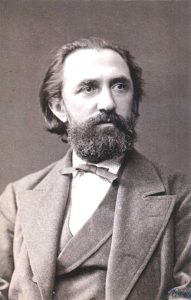Machines and the Control of Work
Franz Reuleaux (1829-1905) was a German mechanical engineer and kinematician. He is considered to be one of the founders of modern kinematics, the study of the motion of mechanisms. Reuleaux made significant contributions to the design and analysis of machines, including the development of new theories and methods for kinematic synthesis. He also wrote extensively on kinematics and machine design, and his books are still considered to be classics in the field. Much of the terms for machines come from Reuleaux work. Reuleaux define a machine as a “combination of resistant bodies so arranged that by their means the mechanical forces of nature can be compelled to do work accompanied by certain determinate motions.”
Intro to Machine/ Mechanism Design
Machine design is the process of creating systems that can convert energy into useful work. Engineers design both simple and complex machines for various purposes. A simple machine is a device that changes the direction or magnitude of a force, such as a ramp or a lever. A complex machine is a device that uses movement to perform work, such as a car or a robot. In this chapter, we will explore some principles and methods of machine design, using examples from different fields of engineering.
One of the main tasks of machine design is to synthesize a machine that can perform a specific function under certain constraints. Synthesis means finding the best possible form and arrangement of the machine elements, such as linkages, gears, springs, etc., to achieve the desired output. For example, if we want to design a machine that can lift a heavy load, we need to consider what type of mechanism can provide enough force and displacement, and how to connect the components to form a stable structure.
Another important task of machine design is to analyze the behavior and performance of the machine under various conditions. Analysis means finding the optimal way to control the machine, such as input power and speed, to achieve the required functionality without violating any other constraints, such as safety, reliability, efficiency, etc. For example, if we want to design a machine that can move parts in a manufacturing process from one area to another, we need to consider how to regulate the motion and speed of the machine, and how to avoid collisions and failures.
To illustrate the process of machine design, let us consider a motivating example: We need to design a machine that can move parts in a manufacturing process from one area to another. The first step is to identify the functions and constraints of the problem. For instance, we may need to specify the size and weight of the parts, the distance and direction of the movement, the time and accuracy required, the available space and resources, etc. The second step is to generate multiple possible solutions that can satisfy the functions and constraints. For instance, we may consider different types of mechanisms, such as linkages, gears, belts, chains, etc., that can provide the necessary movement and force. The third step is to evaluate and compare the solutions based on some criteria, such as cost, feasibility, simplicity, etc., and select the best one. The fourth step is to refine and optimize the solution by applying the techniques of synthesis and analysis. For instance, we may need to determine the optimal dimensions and shapes of the machine elements, and the optimal parameters and settings of the control system.
The final outcome of machine design is a detailed specification of a machine that can perform the desired work in an efficient and reliable manner. Machine design is an iterative and creative process that requires both theoretical knowledge and practical skills. In this chapter, we will introduce some fundamental concepts and methods of machine design that can help engineers solve various engineering problems.


